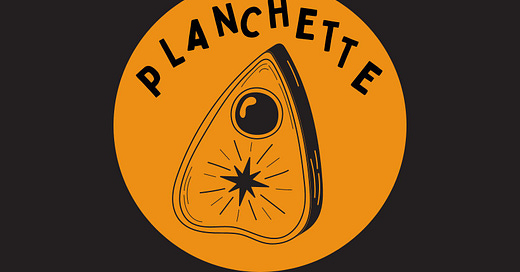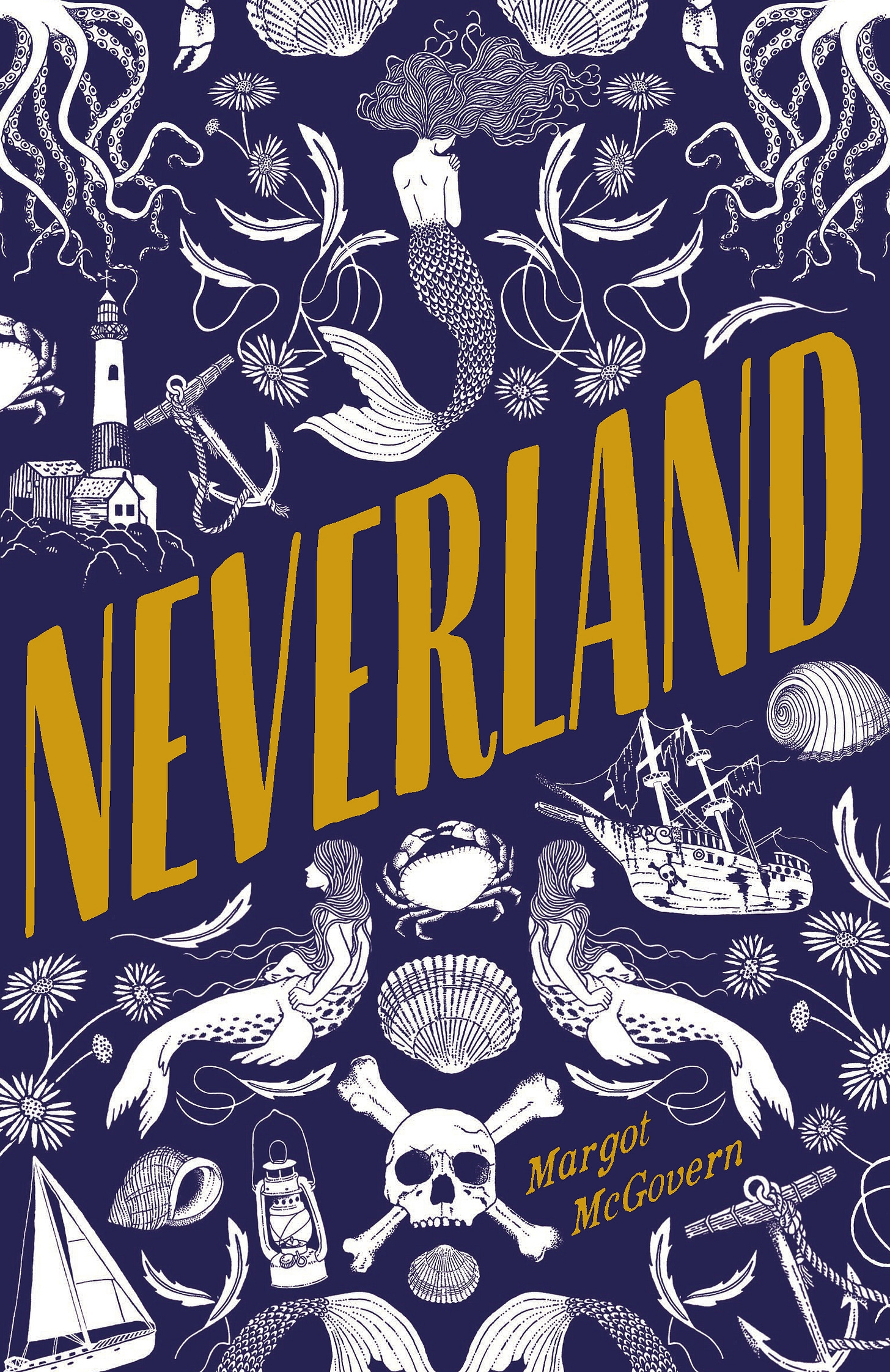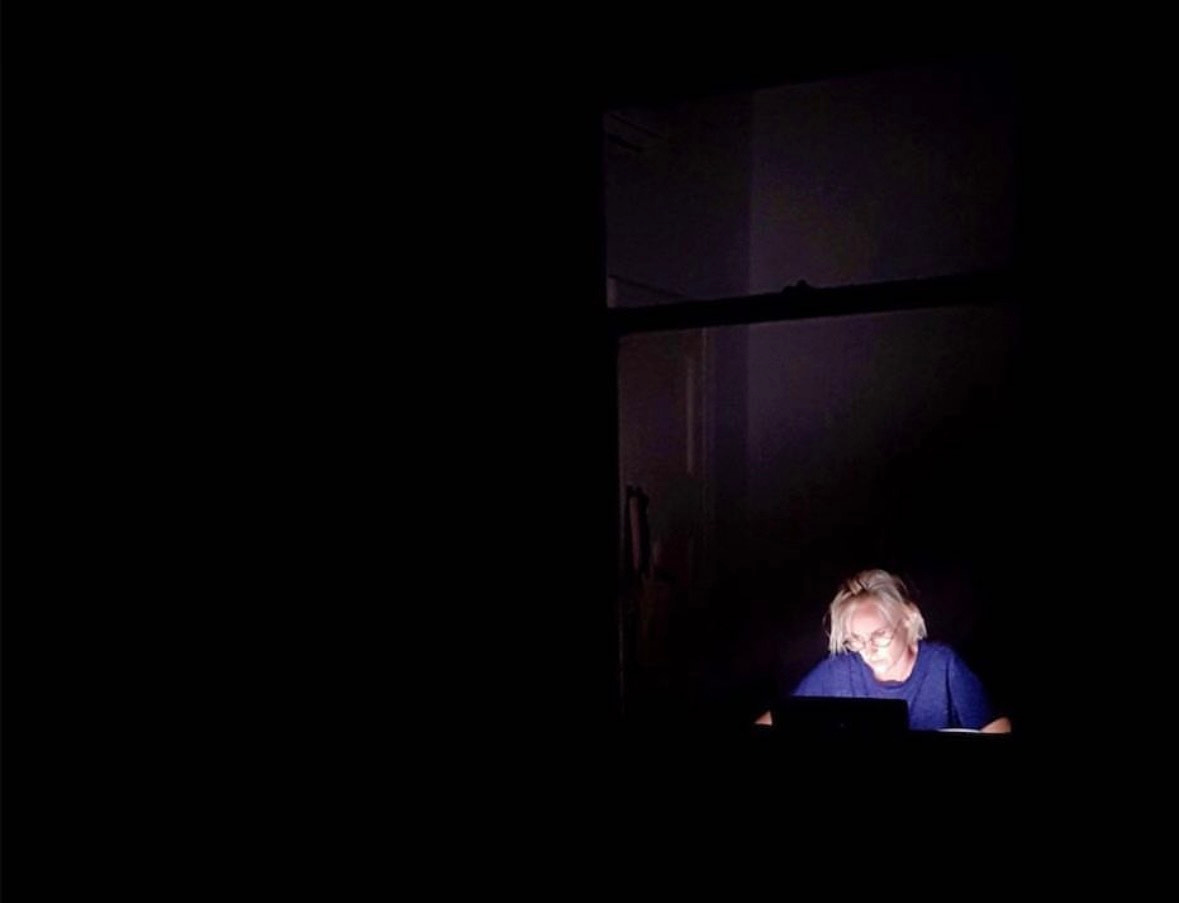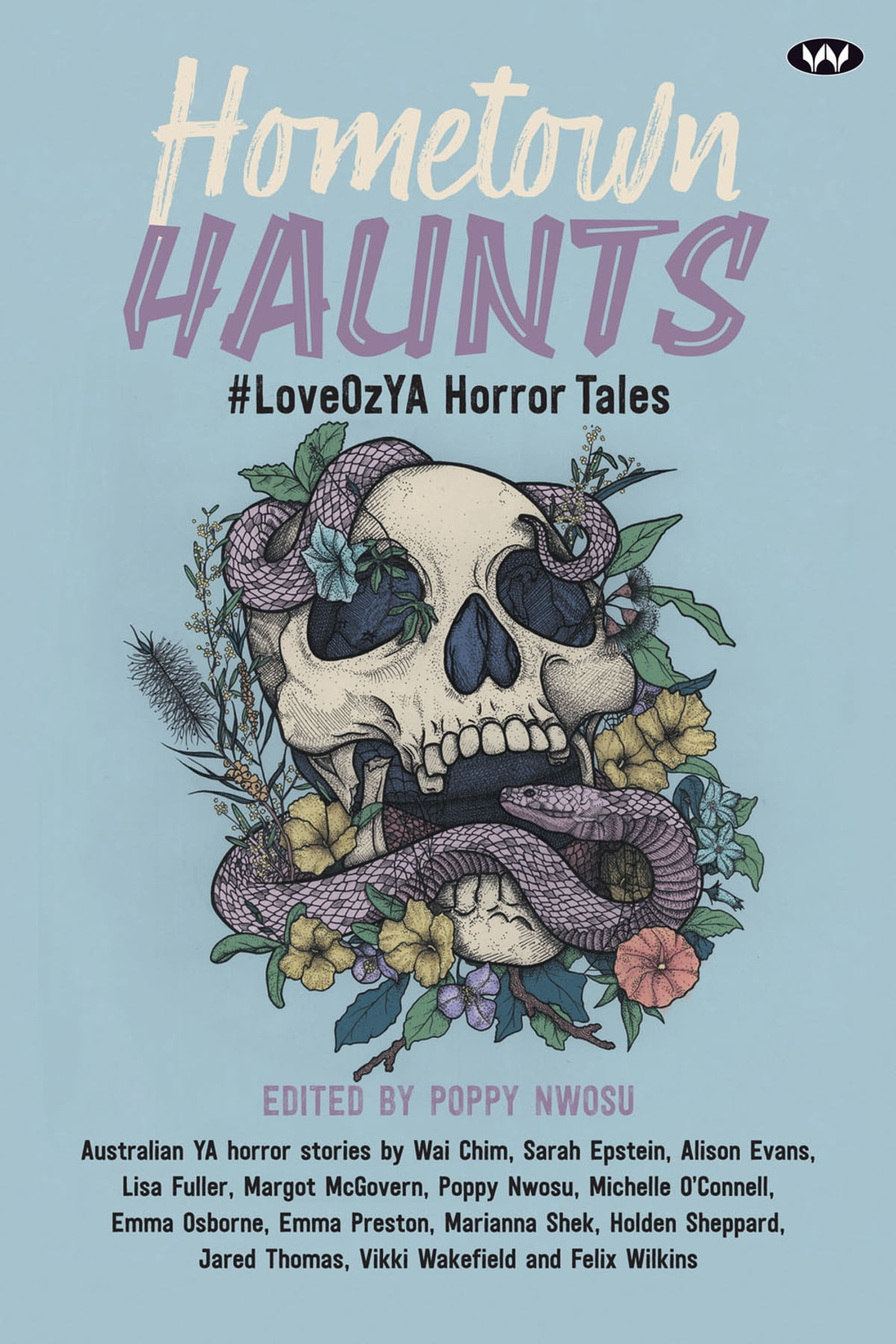First Contact
The first in a series of monthly, behind-the-scenes updates as I countdown to the release of my YA horror novel, Between Us Girls
Hello and welcome to Planchette!
My name is Margot McGovern, and I’m a YA and horror author based in Adelaide, South Australia. My new book (and first horror novel), Between Us Girls, is set to be published by Penguin Random House Aus. in October 2024, and Planchette is a series of monthly, behind-the-scenes updates on everything that happens in the year leading up to the book’s release (and perhaps beyond).
I’m recording these updates for two reasons. First, the months leading up to and following the release of my debut novel, Neverland (also published by PRH Aus.), are a chaotic, sleep-deprived blur. I was giddy with excitement, had no idea what to expect, and was expecting—my daughter, Frankie, was born two weeks after I handed in my structural edits. From then on, I was in survival mode, adjusting to life as a new parent while stumbling through Neverland’s copy edit, proof read and publicity on the thinest fumes of sleep. There was no time or brain space to reflect on what was happening, and exciting moments slipped by unmarked. This time around, I want to make an effort to be present in and record the process.
Second, I want to share the experience of that process! Writing and publishing are mysterious beasts, in part because they look different for every author (and every book). That means we authors don’t always know what to expect (or how to advocate for ourselves), and it can be a lonely road. And readers are often totally in the dark! So while this is by no means a definitive guide to publishing a book, I hope that by including you in the process for Between Us Girls, I can dispel some of the mystery and give you a general idea of what goes on behind the scenes. Think of it as a backstage pass, in exchange for your good company along the way.
Each month, I’ll create a newsletter update and a podcast episode (for those who’d rather listen in) covering three key topics:
Girls’ Catchup: What’s been happening with the publishing and editing process for Between Us Girls in the past month
Writing Life: Other author-y things I’m working on + a spotlight on one aspect of writing (eg: writing groups, finding an agent, publicity, editing, overcoming writers’ block, etc.)
Feeding the Beast: What I’ve been reading/watching/listening to that’s hit for me in the past month
But before we jump to regular programming, some background. As I mentioned, Between Us Girls will be my second published novel, but my first YA horror novel, and it’s been a long time between drinks: my first YA novel, Neverland, was published back in 2018. So this feels like a good point to share a bit about my writing background, why it’s taken me five years to write (or, more accurately, sell) a new manuscript, why the genre shift and how I landed this new deal.
Getting published (the first time)
I’m one of those always-wanted-to-be-a-writer types. I was a bookworm from the get-go and when I found out there were people called authors whose job it was to write said books, as far as I was concerned, my fate was sealed. But becoming a published author is easier said than done. My path to publication was long, and fairly traditional (in-so-much as that’s a thing).
I won my first big writing competition when I was eight with a poem about a sprinkler. I have no idea what the judges saw in my very literal description of our backyard watering system, or what possessed me to write about it, but that win gave me the confidence to believe I had the makings of a writer.
In high school, I wrote everything from poems and stage plays, to film scripts, novels and short stories. And I was a voracious reader and film buff (I still am)—there have been periods in my life when I’ve set writing aside, but I am always, always reading.
After school, I got a casual job in a bookshop while I completed a creative arts degree, majoring in creative writing, at Flinders University, and then levelled that up with a creative writing Honours degree and PhD. I learned a lot about myself and my craft at Flinders, and made wonderful, life-long writer friends, but by the end of my PhD, I’d figured out that a career in academia wasn’t for me.
My partner and I moved to Melbourne, where I spent four years working in the communications department for a medium-sized not-for-profit. This was back in the cowboy days of social media and I gained truckloads of experience writing and editing across a big range of print and digital platforms.
While living in Melbourne, I also tried (unsuccessfully) to find an agent and publisher for my PhD novel, and started working on the manuscript that eventually became Neverland. I entered the second draft of that manuscript in the 2015 Text Prize, and was shortlisted! Huzzah!
The Text Prize carries a fair bit of weight in Australian publishing, and I started querying agents and publishers in earnest after my shortlisting, assuming an offer would quickly follow. Not so. It took another eighteen months, countless rejections and several rewrites to finally land an agent (after she initially rejected me—a full post on that, for sure!), and a further six months and another stack of rejections before Neverland found a home at PRH Aus.
A year after signing my first book deal, and twenty-seven years after determining that books were my fate at age five, I finally became a published author on 2 April 2018. Champagne all round!
Failure
I had always sort of assumed that selling one book meant more would surely follow, and that the bond between publisher and author was a bond for life. I had no idea that second novels are famously difficult. Or that, unless you score a multi-book deal (which is rare for a debut), there’s no guarantee your publisher will be interested in your future work. You’re not exactly back to square one—especially if you have a great agent and a good relationship with your publisher—but you do need to prove you’ve got more than one trick up your sleeve.
I tried to write another book off the back of Neverland. I tried really, REALLY hard. I wrote in every crack of time I could find in the blur of adjusting to new parenthood. I put down words. I even completed a book-length thing and sent it to my agent. And I took her wise, gentle feedback and tried to Frankenstein the manuscript into shape, but the story just wasn’t there.
There are people who manage to write incredible books while caring for small children, but I learned the hard way that I’m not one of them. Nor am I a person who can write coherently on very little sleep. Or during a pandemic. 2018 - 2021 was far from my golden era.
In hindsight, there was nothing in my creative tank and I needed to get some sleep, hit reboot and wait until my brain came back online before trying again. But I couldn’t see any of that at the time, and it was devastating. My anxiety and imposter syndrome were in overdrive. I was convinced Neverland was a fluke and that I was a fraud. I wish I could say it was resilience or some admirable quality that kept my writing dream alive, but it was pure pig-headedness. I simply and stubbornly refused to give up long past the point where I should have pivoted. But I at least possessed enough self-awareness to sense that I needed a new strategy.
Switching to horror
I should preface this section by saying that horror is, and always has been, my genre of choice for comfort reading and viewing. Ghost stories and slashers are my favourites.
Mid-pandemic, with my then-toddler tantrum-ing away from day-time naps but still not sleeping through the night, and the next book not working, I picked up Shirley Jackson’s Life Among the Savages.
Jackson has long been one of my favourite writers. Her voice is sharp and sinister and she wrote some of the 20th century’s best horror fiction while raising four small children as a faculty wife in a remote college town, and I suppose I wanted to understand how she managed it. In contrast to her horror, Savages is funny and warm, but still weird and witchy in its way. And it was my gateway back into horror.
I read Jackson’s short fiction, M R James’ ghost stories, Ellen Datlow’s ‘Best Horror of the Year’ anthologies, Lisa Hannett’s Songs for Dark Seasons, A. C. Wise’s Wendy, Darling (a horror sequel to Peter and Wendy), Paul Tremblay’s A Head Full of Ghosts, Grady Hendrix’s My Best Friend’s Exorcism, Catriona Ward’s The Last House on Needless Street, Stephen Graham Jones’ My Heart is a Chainsaw, and dozens of others. It was all so thrilling and fun and, bit by bit, it restarted my creative engine. For the first time in years I was brimming with ideas, and the thought of writing felt exciting rather than terrifying (ironic, I know).
It was around this time that I saw the call out for Wakefield Press’ Hometown Haunts anthology—a collection of Australian Young Adult horror fiction. It felt like a sign. I spent weeks drafting and obsessing over my story, ‘Euryhaline,’ and probably overworked it—but I wanted to prove that I could write in the space I loved to read, and, lo, it was accepted!
As it turns out, short stories are also far more manageable than whole novels, so I started writing more and pitching them to the big horror magazines. I racked up my share of rejections (of course), but many were of the encouraging, ‘this was so close!’ variety, and I soon sold two stories, ‘Intrusions’ and ‘See How We Shine,’ to The Dark.
By this point, my daughter, at age four, was (finally!) sleeping through the night and off to kindy. The worst of the pandemic was behind us, and I had the time and brain space for bigger things. I also had a new idea for a book.
Landing a second book deal
Between Us Girls is a haunted house story with a twist. It’s also a love letter to the teen horror boom of the late 90s/early 00s and to friendships deepened over scary stories shared in the dark.
The story came easier than anything I’ve written before, but with a failed manuscript and a lot of years between this book and Neverland, getting the words down was hard. Really, really hard. But the story is important to me for all sorts of reasons, and for better or worse, I ignored the voices in my head insisting I couldn’t or shouldn’t do it, and I got the work done.
The manuscript took a year to write, with some chunks of time off here and there while I was doing other work (like most writers, I don’t just write, but I am extremely fortunate in that I work for myself and that work is largely flexible. As a side note: money had been another big stress between books, but my husband had just landed a steady, well-paid job when I started work on the story, and with Frankie at kindy, I had more time to take on other work, too. Financial security makes a world of difference).
I wrote two drafts, three if you include a very messy draft zero, and sent the manuscript to my agent at the end of April this year. I felt reasonably confident that I had something, or at least a potential something, but with the last manuscript being a miss, I was very nervous to get my agent’s read on it. Much obsessive refreshing of my inbox ensued and it was an epic relief when my agent got back to me far sooner than I expected to say that she liked it. Hooray!
We put together a pitch, she sent it out on sub. in late may, and then… I went back to anxiously refreshing my email. I don’t know how much I detail I can go into about the whole process, except to say that being on sub. is tense.
Your agent (if you have one) does the heavy lifting, showing off your work and negotiating any offers that come in, while your job is to meet with any interested editors and resist the urge to email your agent every five minutes for updates. You have to trust your work and trust your agent—which is why authors should be picky about who they choose to represent them (yes, finding an agent is difficult, but it’s 100% a two-way street). Fortunately, my agent, Danielle Binks, is an absolute superstar, and in August I signed a two-book deal for Between Us Girls and a second, stand alone YA horror with my Neverland dream team at PRH Aus.
Publishing has undergone some BIG shifts since the first time I walked this path, but I’m thrilled to be finding my way again. I’ve titled this Substack Planchette (the name for the heart-shaped pointer used on a Ouija board) because it’s both a communication tool and a point of connection (and, yes, it seemed fitting for a horror writer). To that end, I’ll be as open as I can about the good, the bad and the ugly along the way, and put together some deep dives into various aspects of the writing process—if there are topics you’d like to see covered, ask away. We’re in this together.
In the meantime, make sure you subscribe (and maybe take a look at my Instagram: @project_lectito where I post mini life and writing updates), and I’ll be back in the first week of October with my first official check-in.
— Margot








